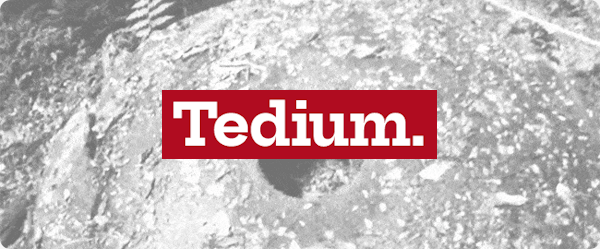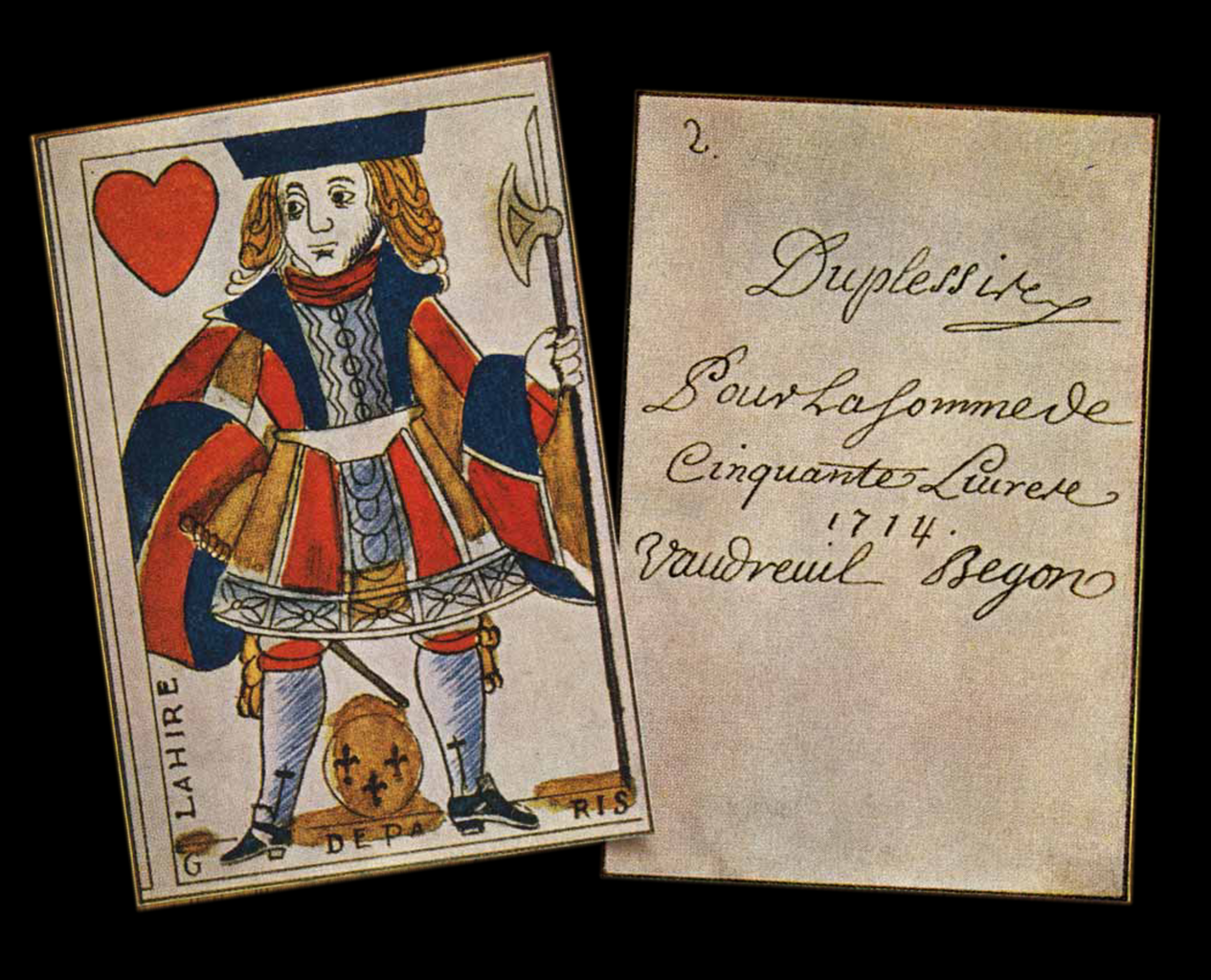Tedium - When Money Doesn’t Look Like Money 💰
|
|
|
|
|
| |
Tea bricks, often produced from ground tea leaves, reflect a form of money you could technically eat if necessary. (Carl Guderian/Flickr)
Four unusual kinds of currency commonly accepted in various parts of the world before the modern day
Tea bricks. Tea, for centuries, was a highly prominent subject of trade, and one that carried significant cultural value in the Asian continent in particular. Compressed tea bricks, whether in whole leaf or ground form, were widely used in China in particular. The value of tea was such that China, along with a few other countries like Tibet and Mongolia, utilized tea bricks as a form of currency, particularly among nomadic cultures. The bricks, of course, have a notable side effect that arguably added to their value—they can be eaten.
Bamboo tallies. A later form of currency that emerged from China in the 19th and early 20th century was the bamboo tally, a wooden token that emerged in part because of economic challenges in China during the latter half of the 19th century. The tokens represented a form of “emergency money” that found wide use during the latter years of the Qing dynasty and even during the World Wars.
Sea shells. A key example of the power and influence of trade, sea shells—particularly of the cowrie, a type of sea snail—became a prominent type of currency in mercantile settings, particularly in African countries. As the website Cultures of West Africa notes, it existed along other common kinds of currency, but eventually supplanted them. “By the 18th century, the cowrie had become the currency of choice along the trade routes of West Africa,” writer Mia Sogoba explained.
Salt bricks. There’s a reason the word salary is derived from salt, after all. Nonetheless, the value of salt as a form of currency, particularly in countries around the Sahara desert and in East Africa. A 1990 New York Times piece noted that salt remained in wide use in these countries until the time of the Second World War.
| |
|
|
| |
Currency has an amazing way of reflecting who we are as a society and what we represent. It can be a sign of how we have to adapt to shifting needs, or how inventive we are, or what we value. A currency is at its core a sign in the belief we have in a society.
If a country has to switch to bottle caps to cover cab fares, it arguably does not say good things about the country’s federal government.
There’s a concept constantly bandied about with cryptocurrency, particularly the kind that requires giant GPU farms to create, called “proof of work,” in which value is based on the effort put in, usually in the form of computational cycles.
But one can argue that proof of work existed long before cryptographic mining rigs. After all, people had to go to all the work of finding nuggets of gold and silver upon which we began to base our monetary systems.
Perhaps the best way of underlining this point is by taking a look at Yap, a Micronesian island with a population of just over 11,000 people. It is famed for its Rai, a set of flat, donut-holed stones that come in various sizes. Some of them are gigantic, and the really big ones were often very hard to obtain. Some of them are bigger than most people.
They are reflections of an important discovery that the Yapese people made long ago. On a far-away island, there was a huge deposit of limestone, and that limestone could be had if you could get your makeshift boat to that island and bring it back.
Eventually, the society figured out that this was their thing of value—this was their gold. And they long treated it as such. Now, to be clear, giant stone discs are no longer how the Yapese people do things today—they use the U.S. dollar, because it’s much easier to transport in regular use—but it in many ways reflected something basic and true about how money works. The giant stones are still used in ceremonial senses.
This is their proof of work. Someone had to take the time and effort to bring this limestone back to their island, and giving it to someone else meant that someone else had to carry this giant stone. It is perhaps the perfect example of a real object making the metaphor obvious. This is everything money represents in a perfect world with zero outside influence.
You can’t inflate something that you can’t even lift.
--
Find the one an interesting read? [Share it with a pal]https://tedium.co/2023/01/18/alternative-currency-history/)!
And thanks to Important, Not Important for sponsoring.
| |
|
|
Older messages
When Money Doesn’t Look Like Money 💰 [FIXED!]
Friday, January 20, 2023
Types of currency that don't make dollars and cents. Here's a version for your browser. Hunting for the end of the long tail • January 18, 2023 Sadly, we had some formatting issues on this, so
The Year Canada Recalled Pop 🇨🇦
Saturday, January 7, 2023
Canada banned a popular soda size in 1979—for public safety reasons. Here's a version for your browser. Hunting for the end of the long tail • January 07, 2023 Announcement: As hinted at a couple
The Pioneers ✍️
Wednesday, January 4, 2023
A few of the most influential pioneers in the history of blogging. Here's a version for your browser. Hunting for the end of the long tail • January 04, 2023 Today in Tedium: I think the thing I
The Number 2023 🗓
Saturday, December 31, 2022
We're obsessed with the number 23 in 2023. Here's a version for your browser. Hunting for the end of the long tail • December 30, 2022 Today in Tedium: I don't know what else you could say
A Genuine Link To The Past 🗡
Wednesday, December 28, 2022
The Zelda series, as a form of grief management. Here's a version for your browser. Hunting for the end of the long tail • December 28, 2022 Hey all, Ernie here with a fresh piece from David Buck,
You Might Also Like
Import AI 399: 1,000 samples to make a reasoning model; DeepSeek proliferation; Apple's self-driving car simulator
Friday, February 14, 2025
What came before the golem? ͏ ͏ ͏ ͏ ͏ ͏ ͏ ͏ ͏ ͏ ͏ ͏ ͏ ͏ ͏ ͏ ͏ ͏ ͏ ͏ ͏ ͏ ͏ ͏ ͏ ͏ ͏ ͏ ͏ ͏ ͏ ͏ ͏ ͏ ͏ ͏ ͏ ͏ ͏ ͏ ͏ ͏ ͏ ͏ ͏ ͏ ͏ ͏ ͏ ͏ ͏ ͏ ͏ ͏ ͏ ͏ ͏ ͏ ͏ ͏ ͏ ͏ ͏ ͏ ͏ ͏ ͏ ͏ ͏ ͏ ͏ ͏ ͏ ͏ ͏ ͏ ͏ ͏ ͏ ͏ ͏ ͏ ͏ ͏ ͏ ͏ ͏
Defining Your Paranoia Level: Navigating Change Without the Overkill
Friday, February 14, 2025
We've all been there: trying to learn something new, only to find our old habits holding us back. We discussed today how our gut feelings about solving problems can sometimes be our own worst enemy
5 ways AI can help with taxes 🪄
Friday, February 14, 2025
Remotely control an iPhone; 💸 50+ early Presidents' Day deals -- ZDNET ZDNET Tech Today - US February 10, 2025 5 ways AI can help you with your taxes (and what not to use it for) 5 ways AI can help
Recurring Automations + Secret Updates
Friday, February 14, 2025
Smarter automations, better templates, and hidden updates to explore 👀 ͏ ͏ ͏ ͏ ͏ ͏ ͏ ͏ ͏ ͏ ͏ ͏ ͏ ͏ ͏ ͏ ͏ ͏ ͏ ͏ ͏ ͏ ͏ ͏ ͏ ͏ ͏ ͏ ͏ ͏ ͏ ͏ ͏ ͏ ͏ ͏ ͏ ͏ ͏ ͏ ͏ ͏ ͏ ͏ ͏ ͏ ͏ ͏ ͏ ͏ ͏ ͏ ͏ ͏ ͏ ͏ ͏ ͏ ͏ ͏ ͏ ͏ ͏ ͏ ͏
The First Provable AI-Proof Game: Introducing Butterfly Wings 4
Friday, February 14, 2025
Top Tech Content sent at Noon! Boost Your Article on HackerNoon for $159.99! Read this email in your browser How are you, @newsletterest1? undefined The Market Today #01 Instagram (Meta) 714.52 -0.32%
GCP Newsletter #437
Friday, February 14, 2025
Welcome to issue #437 February 10th, 2025 News BigQuery Cloud Marketplace Official Blog Partners BigQuery datasets now available on Google Cloud Marketplace - Google Cloud Marketplace now offers
Charted | The 1%'s Share of U.S. Wealth Over Time (1989-2024) 💰
Friday, February 14, 2025
Discover how the share of US wealth held by the top 1% has evolved from 1989 to 2024 in this infographic. View Online | Subscribe | Download Our App Download our app to see thousands of new charts from
The Great Social Media Diaspora & Tapestry is here
Friday, February 14, 2025
Apple introduces new app called 'Apple Invites', The Iconfactory launches Tapestry, beyond the traditional portfolio, and more in this week's issue of Creativerly. Creativerly The Great
Daily Coding Problem: Problem #1689 [Medium]
Friday, February 14, 2025
Daily Coding Problem Good morning! Here's your coding interview problem for today. This problem was asked by Google. Given a linked list, sort it in O(n log n) time and constant space. For example,
📧 Stop Conflating CQRS and MediatR
Friday, February 14, 2025
Stop Conflating CQRS and MediatR Read on: my website / Read time: 4 minutes The .NET Weekly is brought to you by: Step right up to the Generative AI Use Cases Repository! See how MongoDB powers your




